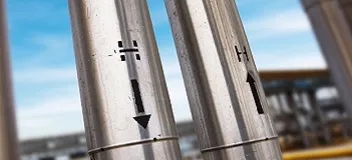The H21 programme has shown that a city’s natural gas supply can be decarbonized using 100% hydrogen
Converting existing gas networks to hydrogen is technically and economically feasible
Tests are proving the safety case for such a switch
The programme could support the case for low- and zero-carbon hydrogen becoming the world’s main energy carrier
While burning natural gas emits about half the carbon of an equivalent amount of oil or coal, combusting hydrogen (H2) gas emits none at point of use.
Steam-methane reforming (SMR) is the main process used to separate natural gas, which is mostly methane, to produce H2 and carbon dioxide (CO2). Hydrogen can then be used as a lower-carbon fuel, while captured CO2 can be transported to, and stored in, depleted oil and gas fields through carbon capture and storage (CCS; Figure 1 ).
Some gas distribution system operators (DSO) believe that H2 can make the continued economic use of existing gas infrastructure more socially and politically acceptable in a decarbonizing world.
One such operator is the UK’s Northern Gas Networks (NGN), whose H21 programme director, Dan Sadler, manages the H21 programme. This government-funded initiative, led by NGN on behalf of Britain’s DSOs, is researching and testing the distribution of H2 in the UK’s existing natural gas networks. “The aim is to provide customers with all the benefits of gas without the carbon footprint,” he said.



